Call for Latebreaking Abstracts
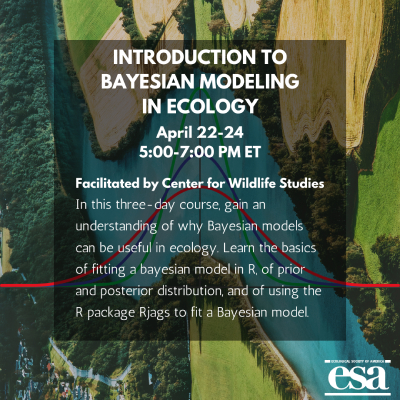
Bayesian Models in Ecology
This 3-day (6 hours) course is for ecologists of all career levels! Use hands-on lessons to uncover the power of R and utilize tools like JAGS and rjags to fit Bayesian models with precision.
Bayesian Models in Ecology
Academic Jobs Roadmap
Empower yourself for an academic career! Over 7 sessions split between May and October (as a series or a la carte), dive into successful strategies for key points in the application & interview processes.
Academic Jobs Roadmap
Social Events in Long Beach
Our host city offers incredible opportunities for social and business events for groups with almost any interest -- submit your proposal by April 11.
Social Events in Long BeachJournals & Publications
-
ESA's Journals & Publications
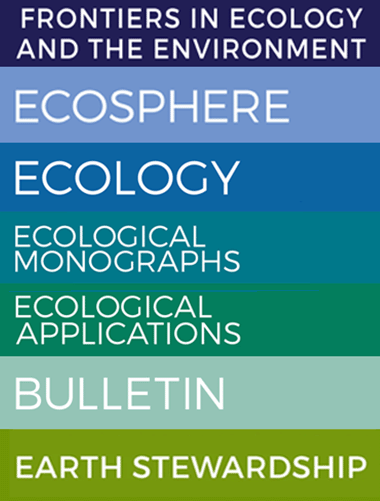
The Ecological Society of America has over 100 years of journal publishing history and offers some of the most widely read and cited journals in the field of ecology. The seven journals in our portfolio encompass a wide array of aims and scope of study, making them an important and accessible outlet for scientists, researchers, practitioners, professionals, citizen scientists, and others seeking to publish their work. The ESA staff provides editorial support with our publishing partner, John Wiley & Sons. Several discounts towards publication in the ESA journals are available from ESA and our publisher. We welcome your submissions.
-
Frontiers in Ecology and the Environment
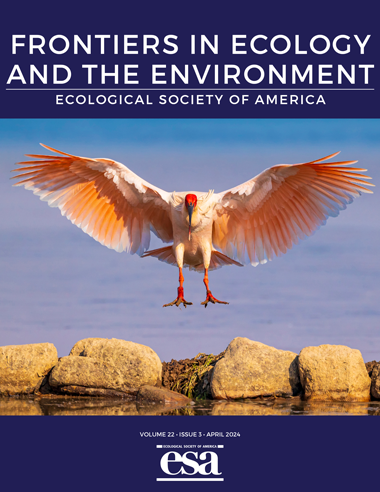
The IUCN Red List relies on various criteria, including range and population size, to assess the imperilment status of species such as the crested ibis (Nipponia nippon). However, the IUCN methodology notably excludes considerations of genetic variability and dispersal capacity. In the April issue of Frontiers, Chen et al. share an alternative framework—the life strategy index—which incorporates these missing elements into its assessment of extinction risk, which is especially important in the context of the biodiversity crisis and anthropogenic climate change. By accounting for a species’ evolutionary, ecological, and colonization potential, this new index may help to complement the widely adopted Red List.
-
Ecosphere
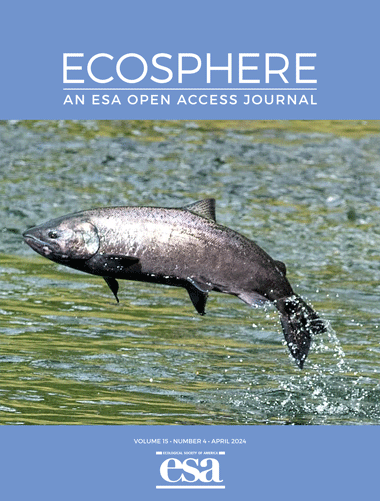
To determine the extent to which a large restoration effort in the 1990s altered the abundance and stability of the Butte Creek population of spring-run Chinook Salmon and of the entire spring-run stock complex in California's Central Valley, Cordoleani et al. compared annual trends before and after restoration and correlated adult abundance to floodplain inundation area. This research, published in the March issue of Ecosphere, underscores the importance of restoring a connected mosaic of aquatic habitats across modified landscapes, including cold-water refugia and floodplains, to preserve multiple (across-population) life history pathways for increasing salmon stock complex stability and abundance.
-
Ecology
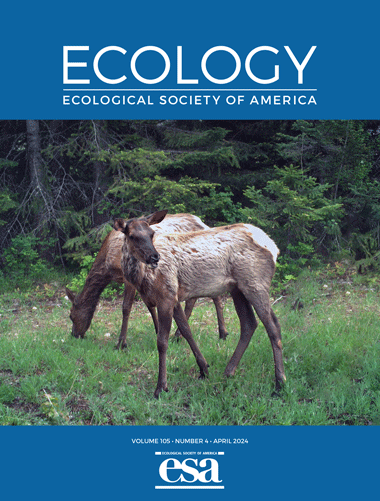
Adult female elk (Cervus canadensis) in northeastern Washington, USA, balance shifting risks from cougars, wolves, and humans by altering habitat preferences according to the time of day. In their study published in the April issue of Ecology, Ganz et al. found that humans caused most adult female elk deaths through hunting and vehicle collisions, and elk prioritized avoiding humans over wolves and cougars in the daytime, when humans are most active. At night, elk primarily avoided cougars and wolves (when these carnivores primarily hunt) and preferred areas near human activities, which reduced exposure to the threat of wolf predation.
-
Ecological Monographs
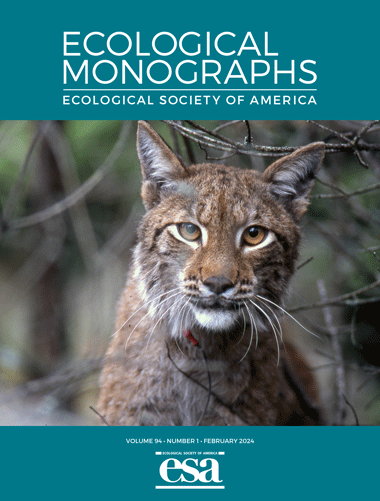
Large carnivores, including the Eurasian lynx (Lynx lynx), are expanding in Europe. In their study published in the February issue of Ecological Monographs, Andrén and Liberg have used that unusual situation of recolonization to study the interaction between lynx and roe deer (Capreolus capreolus). The authors found that a Lotka–Volterra type predator–prey model could explain the dynamic relationship between lynx and roe deer. The cover image shows a radio-marked female Eurasian lynx that was photographed 27 June 2000 in the study area near Grimsö Wildlife Research Station in Sweden.
-
Ecological Applications
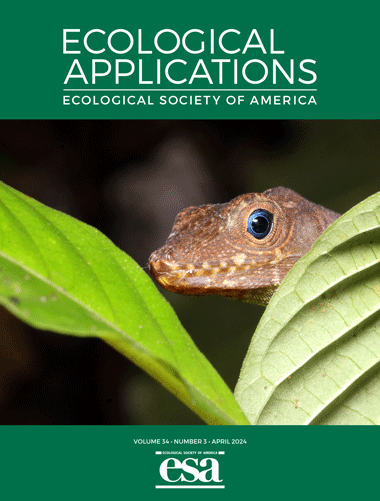
Anolis gundlachi is a shade specialist lizard endemic to Puerto Rico that inhabits old-growth forests and forests in earlier stages of succession if these provide the shaded conditions required for its physiological needs. Acevedo et al. studied the recolonization of secondary forests by this shade specialist through the lens of range expansion theory. They found differences in phenotypic traits, and lower densities and parasitism rates in younger forests when compared to matured forests as predicted by range expansion theory. Their study can be found in the April issue of Ecological Applications.
-
The Bulletin
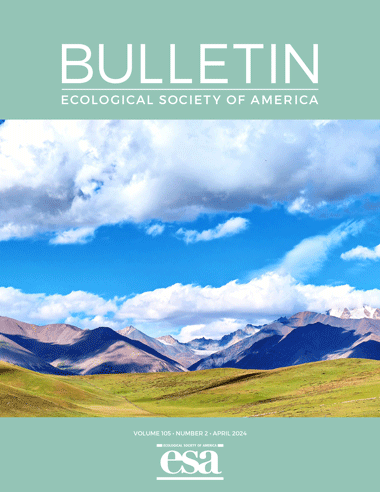
In the April issue of the ESA Bulletin, ESA President-Elect Stephanie E. Hampton and recent Past-Presidents Kathleen C. Weathers and Dennis S. Ojima summarize ESA's publishing portfolio and the benefits of publishing in ESA journals. Our journals are widely available and offer many discounts to authors thanks to our publishing partnerships, and publication in ESA journals provides ESA with opportunities to enrich our programs that support students, early career researchers, and underrepresented groups, and more.
-
Earth Stewardship
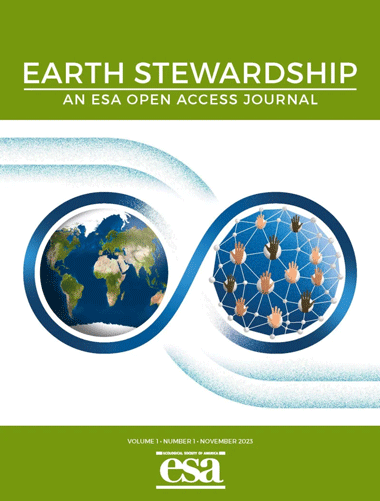
We are delighted to announce a call for submissions for the inaugural issue of Earth Stewardship. This exciting new Open Access journal, launched with our publishing partner, John Wiley & Sons, calls for a broad spectrum of scientifically and technologically innovative and groundbreaking contributions including cross-cultural perspectives from leading researchers, policymakers, traditional custodians of land and sea and indigenous communities. Earth Stewardship publishes applied and theoretical articles to promote a broad, intercultural, and participatory foundation for earth stewardship.
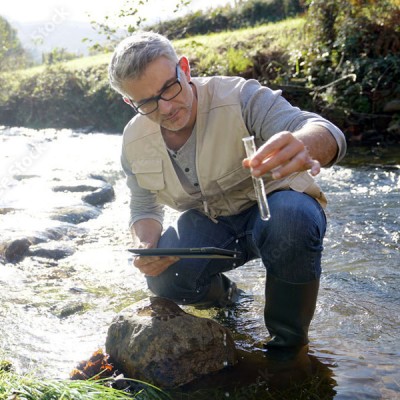
Professional Certification
Employers in all sectors value a credential that validates your skill as a professional. Learn more about ongoing changes to ESA certification and start your application today!
Professional Certification
Opportunity Fund Donations
Make a difference and fund programs which empower, educate and embolden both the current and next generation of scientists in the vast field of ecology.
Opportunity Fund Donations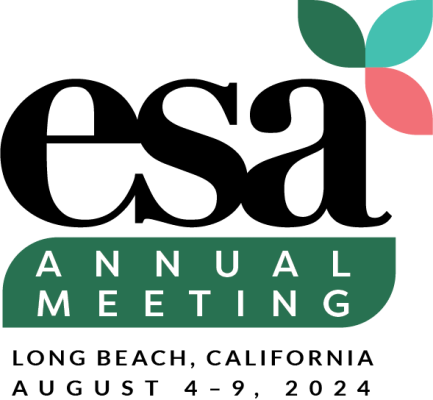
This Year's Meeting
The 2024 Annual Meeting will be held in Long Beach California. Select the following link and check out the theme, preliminary schedule, exhibitor opportunities and upcoming deadlines for proposals.
This Year's Meeting
Join Us for 2024
Only ESA members enjoy full access to our portfolio of leading journals, big discounts on professional programs and events, and opportunities to network in our international community of thousands.
Join Us for 2024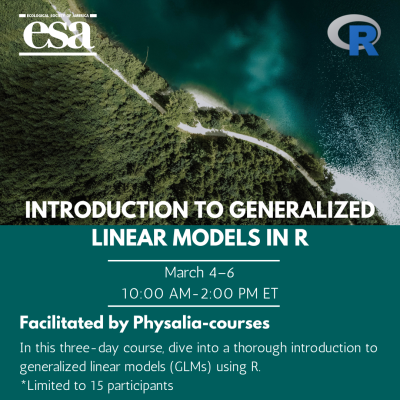
Generalized Linear Models in R
In this 3-day course from Physalia & ESA, dive into a thorough intro to GLM using R. Ideal for anyone interested in advanced statistical modeling! Just 2 spots remaining!
Generalized Linear Models in R
Improve Your Abstract
Before you submit your abstract for #ESA2024, make it the best it can be! We again present Bruce Kirchoff with tips to optimize your work, get it accepted and draw attention to your presentation.
Improve Your Abstract